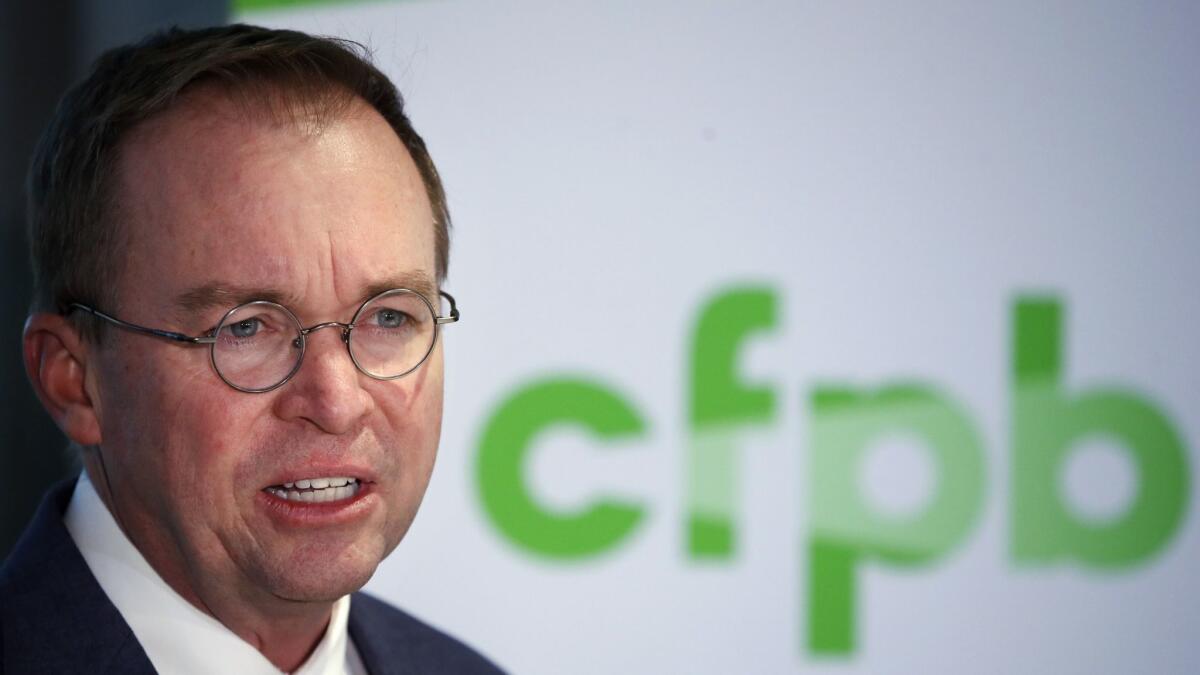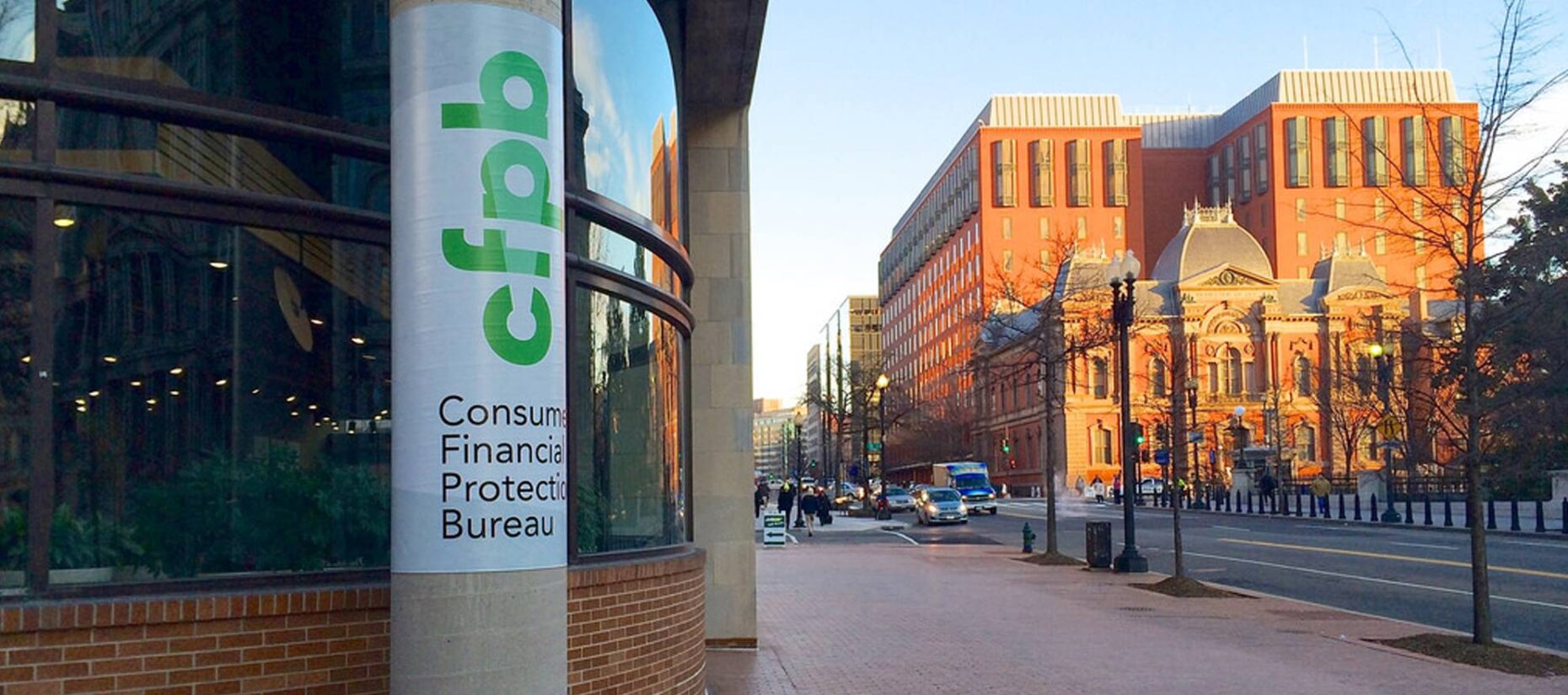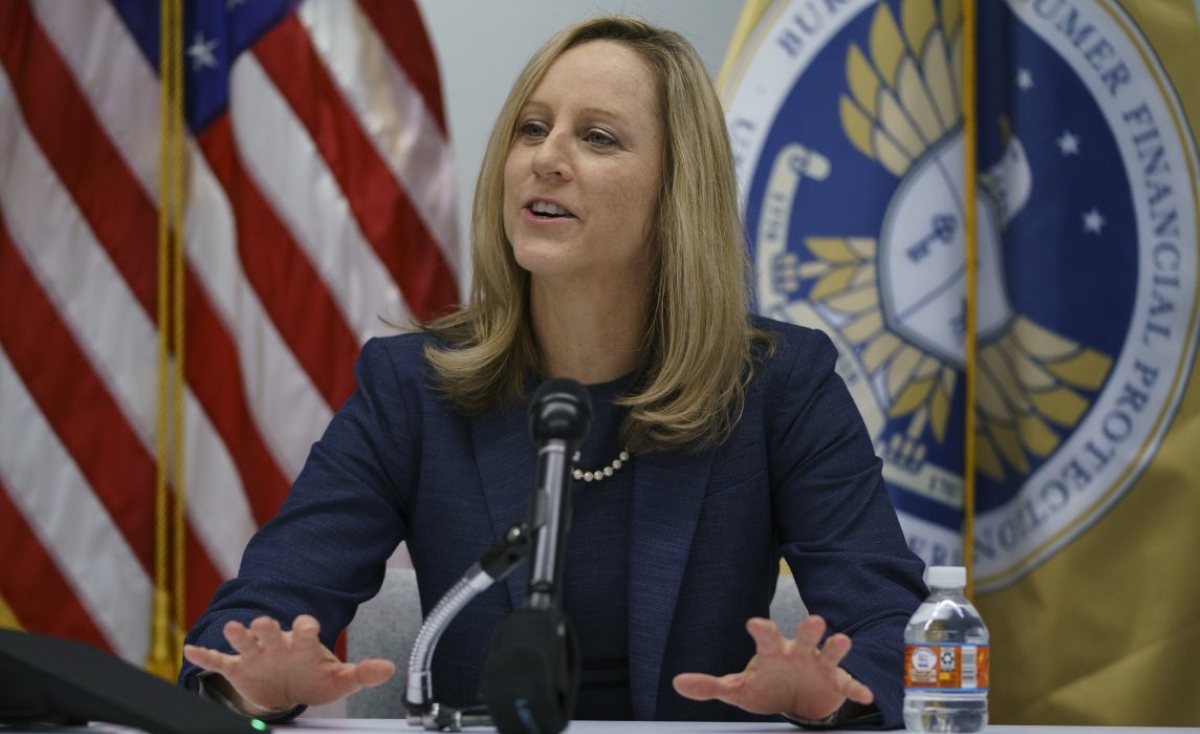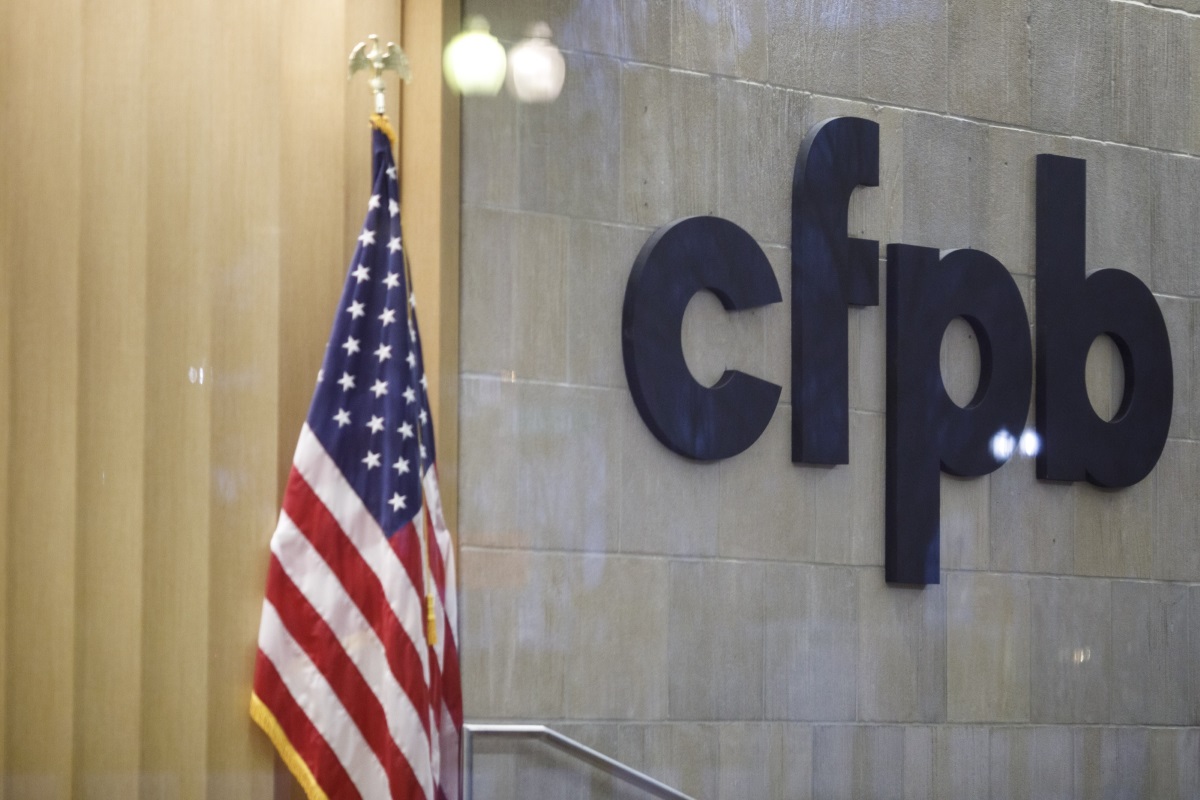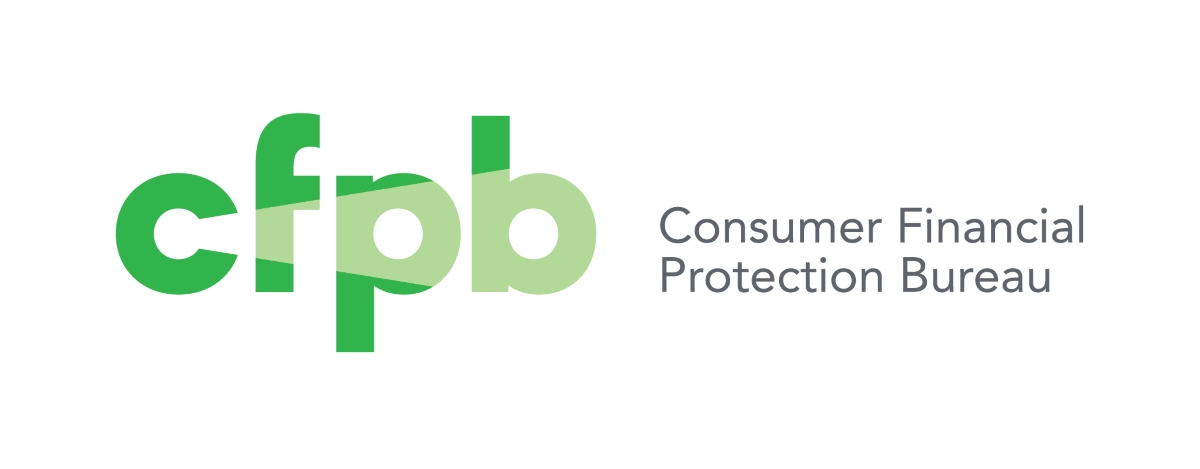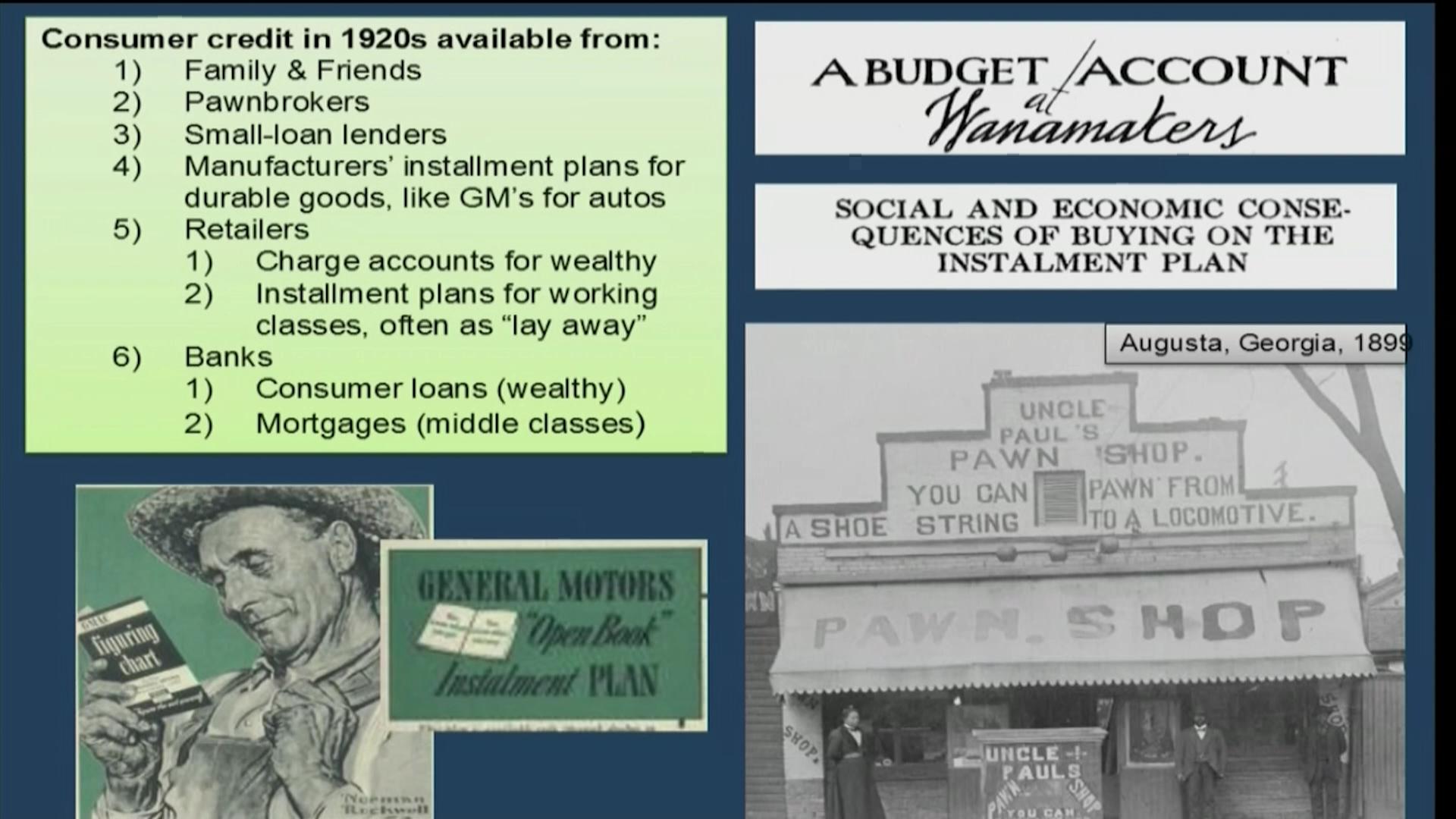Home>Finance>What Makes The Consumer Financial Protection Bureau Unpopular?


Finance
What Makes The Consumer Financial Protection Bureau Unpopular?
Modified: March 1, 2024
Learn why the Consumer Financial Protection Bureau is unpopular in the world of finance. Understand the factors contributing to its negative reputation.
(Many of the links in this article redirect to a specific reviewed product. Your purchase of these products through affiliate links helps to generate commission for LiveWell, at no extra cost. Learn more)
Table of Contents
- Introduction
- Role and Purpose of the Consumer Financial Protection Bureau
- Criticisms of the Consumer Financial Protection Bureau
- Political Opposition and Attacks
- Regulatory Overreach and Impact on Businesses
- Lack of Accountability and Transparency
- Alleged Bias and Partisanship
- Potential Reforms and Future Outlook
- Conclusion
Introduction
The Consumer Financial Protection Bureau (CFPB) is an independent agency of the United States government that was created under the Dodd-Frank Wall Street Reform and Consumer Protection Act in 2010. Its primary mission is to protect consumers from unfair, deceptive, and abusive practices by financial institutions.
The establishment of the CFPB was a response to the financial crisis of 2008, which exposed widespread predatory lending and fraudulent practices that contributed to the collapse of the housing market and subsequent economic downturn. The agency was designed to be a watchdog for consumers, providing a platform for complaint resolution, conducting investigations, and implementing regulations to prevent future abuses.
However, despite its intended purpose, the Consumer Financial Protection Bureau has been met with a significant amount of criticism and controversy since its inception. From accusations of regulatory overreach to concerns about lack of accountability, the CFPB has faced pushback from both political opponents and industry stakeholders.
In this article, we will explore the factors that have contributed to the unpopularity of the Consumer Financial Protection Bureau. We will examine the criticisms leveled against the agency and discuss the potential reforms that could address these issues. By gaining a better understanding of the challenges facing the CFPB, we can have a more informed perspective on its role and effectiveness in consumer financial protection.
Role and Purpose of the Consumer Financial Protection Bureau
The Consumer Financial Protection Bureau (CFPB) was established with the primary objective of protecting consumers in the financial marketplace. It serves as a regulatory agency tasked with enforcing federal consumer financial laws and regulations.
One of the key roles of the CFPB is to educate and empower consumers regarding their financial rights and responsibilities. The bureau provides resources and information to help consumers make informed financial decisions and navigate complex financial products and services.
In addition to consumer education, the CFPB is responsible for enforcing federal consumer financial laws. This includes taking legal action against financial institutions that engage in unfair, deceptive, or abusive practices. The bureau has the authority to levy fines, issue subpoenas, and make regulations to ensure compliance with consumer protection laws.
The CFPB also acts as a watchdog for consumer complaints. It maintains a centralized database where individuals can report issues they have encountered with financial products or services. This database not only helps consumers resolve their complaints but also provides the CFPB with valuable data to identify patterns of abuse and take appropriate enforcement actions.
Furthermore, the CFPB conducts market research and analysis to identify potential risks to consumers and the broader financial system. It studies emerging trends and developments in the financial industry, assesses their impact on consumers, and recommends regulatory changes or interventions to address any identified risks.
In summary, the role of the Consumer Financial Protection Bureau is multifaceted. It aims to protect consumers from unfair practices, promote financial education, enforce consumer financial laws, address consumer complaints, and conduct research to anticipate and prevent potential risks in the financial marketplace.
Criticisms of the Consumer Financial Protection Bureau
Despite its stated mission of consumer protection, the Consumer Financial Protection Bureau (CFPB) has faced significant criticism from various quarters. These criticisms center around concerns about regulatory overreach, lack of accountability, and alleged bias in its enforcement actions.
One of the main criticisms leveled against the CFPB is its regulatory overreach. Critics argue that the bureau has too much power and discretion in its rulemaking and enforcement activities. They contend that the agency’s broad interpretation of consumer protection laws has resulted in burdensome regulations that stifle innovation and increase compliance costs for financial institutions.
Another area of criticism is the perceived lack of accountability of the CFPB. Unlike traditional regulatory agencies that are subject to oversight by a bipartisan commission or board, the CFPB is led by a single director appointed by the president. Critics argue that this structure concentrates excessive power in the hands of the director, making the agency less accountable to the public and susceptible to political influence.
Furthermore, there are concerns about the CFPB’s alleged bias and partisanship in its enforcement actions. Some critics argue that the bureau has disproportionately targeted certain industries or business practices, leading to accusations of selective enforcement. This has raised questions about the agency’s objectivity and impartiality in carrying out its mandate.
Additionally, opponents of the CFPB argue that it lacks transparency in its decision-making processes. They claim that the agency’s rulemaking and enforcement actions are often conducted behind closed doors, with little opportunity for public input or accountability. Critics argue that this opacity undermines the legitimacy of the CFPB and inhibits meaningful dialogue and debate on important consumer protection issues.
Moreover, there have been concerns about the CFPB’s impact on small businesses. Critics argue that the agency’s regulations and enforcement actions place a disproportionate burden on small financial institutions, hindering their ability to compete and serve consumers. They contend that this regulatory burden disproportionately harms community banks and credit unions, which play a vital role in providing access to credit and financial services to underserved communities.
It is important to note that not all criticisms of the CFPB are shared universally, and there are differing opinions on the extent and validity of these concerns. However, these critiques highlight the ongoing debate surrounding the role, scope, and effectiveness of the Consumer Financial Protection Bureau in achieving its stated mission of consumer protection.
Political Opposition and Attacks
The Consumer Financial Protection Bureau (CFPB) has been a subject of political opposition and attacks since its establishment. Critics argue that the bureau represents government overreach and undermines free-market principles.
One of the main sources of political opposition to the CFPB stems from its structure and independence. Unlike most government agencies, the CFPB is funded through the Federal Reserve instead of Congress, which some critics argue gives it too much autonomy and limits accountability.
Another point of contention is the appointment of the CFPB director. The position is filled by a single individual appointed by the president and confirmed by the Senate, rather than a board or commission. This has led to concerns about potential partisanship and lack of checks and balances.
Opponents of the CFPB have also taken issue with the bureau’s enforcement actions. They argue that the regulatory framework established by the CFPB imposes unnecessary burdens on financial institutions and stifles innovation. Critics claim that this hampers economic growth and limits consumer choice.
Furthermore, there have been attempts to limit the powers of the CFPB through legislative and legal actions. For example, there have been calls to subject the bureau to the congressional appropriations process, which would allow for greater oversight and control over its budget. In addition, there have been lawsuits challenging the constitutionality of the CFPB’s structure and authority.
Political attacks on the CFPB have come from both sides of the aisle. Some conservative lawmakers and organizations have long been critical of the bureau, arguing that it is unnecessary and duplicative of existing regulatory bodies. On the other hand, some progressive groups have expressed concerns that the CFPB has not gone far enough in its regulatory actions and enforcement efforts.
It is important to note that political opposition to the CFPB is often driven by ideological differences and differing views on the role of government in consumer protection and regulation. This ongoing debate underscores the challenges faced by the bureau in carrying out its mission while navigating the political landscape.
Regulatory Overreach and Impact on Businesses
One of the major criticisms levied against the Consumer Financial Protection Bureau (CFPB) is the perception of regulatory overreach and the impact it has on businesses, particularly financial institutions. Critics argue that the CFPB’s extensive regulatory authority and enforcement actions have created burdensome compliance requirements and stifled innovation.
Opponents of the CFPB assert that the agency has gone beyond its intended scope by implementing rules and regulations that exceed the authority granted to it under the Dodd-Frank Act. They argue that the broad interpretation of consumer protection laws has resulted in regulations that are overly burdensome for financial institutions, especially smaller ones without the same resources as larger institutions.
Additionally, critics claim that the CFPB’s regulations have inhibited innovation in the financial industry. They argue that the bureau’s strict oversight and enforcement actions make financial institutions reluctant to introduce new products or services due to the fear of regulatory repercussions. This, in turn, limits consumer choice and hampers the development of innovative solutions that could benefit consumers.
Furthermore, opponents argue that the compliance costs associated with CFPB regulations disproportionately impact smaller financial institutions. Community banks and credit unions, which often serve local communities and underrepresented populations, face significant challenges in complying with the CFPB’s complex regulations. Critics claim that this regulatory burden puts smaller institutions at a disadvantage and can result in reduced access to credit and financial services for consumers.
Another concern is the lack of clarity and specificity in the CFPB’s regulations. Critics argue that the agency’s rules often lack clear guidance, leaving businesses unsure of how to comply and opening them up to the risk of penalties and lawsuits. This uncertainty contributes to the overall climate of regulatory burden and impacts businesses’ ability to effectively operate and serve their customers.
To address these criticisms, proponents of regulatory reform advocate for a more balanced approach that still protects consumers while reducing the burden on businesses. They argue for greater transparency in rulemaking, ensuring that regulations are clear and provide sufficient guidance for compliance. Additionally, they propose more robust cost-benefit analysis to assess the impact of regulations on businesses and consumers.
It is important to strike a balance between consumer protection and the ability of businesses to thrive and innovate. While the aim of the CFPB is to safeguard consumers from unfair practices in the financial industry, critics argue that its approach should be refined to mitigate the negative impact on businesses, particularly those on the smaller scale.
Lack of Accountability and Transparency
Another significant criticism directed at the Consumer Financial Protection Bureau (CFPB) is the perceived lack of accountability and transparency in its operations. Opponents argue that the agency’s structure and decision-making processes hinder effective oversight and public scrutiny.
One of the main points of contention is the CFPB’s funding mechanism. Unlike most government agencies, the CFPB is not subject to the congressional appropriations process. Instead, it is funded by the Federal Reserve, which some critics argue reduces the bureau’s accountability to taxpayers and limits congressional oversight.
In addition, the CFPB is led by a single director appointed by the president, rather than a bipartisan commission or board. Critics argue that this consolidation of power in the hands of a single individual undermines checks and balances and makes the agency less accountable to the public and susceptible to political influence.
Moreover, opponents of the CFPB assert that the bureau lacks transparency in its rulemaking and enforcement actions. They argue that the agency often conducts its business behind closed doors, with little opportunity for public input or scrutiny. This lack of transparency undermines the public’s trust in the agency and inhibits meaningful engagement on important consumer financial protection matters.
Another aspect of the perceived lack of accountability is the limited options for challenging the CFPB’s decisions. Critics argue that the bureau’s enforcement actions and regulatory decisions are difficult to challenge in court. This lack of judicial oversight further contributes to the notion that the agency operates with unchecked power.
To address these concerns, proponents of reform advocate for increased transparency and accountability measures for the CFPB. They argue for increased congressional oversight, ensuring that the agency is subject to more direct scrutiny and accountability. They also call for more opportunities for public input in the rulemaking process and the establishment of clear guidelines for the CFPB’s actions.
Transparency reforms could involve the standardization of the CFPB’s rulemaking processes, including clear guidelines on public comment periods and more transparent decision-making. Additionally, supporters of accountability reforms suggest a more balanced leadership structure for the agency, such as a bipartisan commission or board, to promote a broader range of perspectives and minimize the concentration of power.
By addressing the concerns of accountability and transparency, the CFPB can enhance its legitimacy and ensure that it operates in a manner consistent with democratic principles and public trust.
Alleged Bias and Partisanship
One of the persistent criticisms directed at the Consumer Financial Protection Bureau (CFPB) is the allegation of bias and partisanship in its enforcement actions and decision-making processes. Critics argue that the agency has shown favoritism towards certain industries or business practices, which undermines the perception of fairness and objectivity.
Opponents claim that the CFPB’s enforcement actions have disproportionately targeted certain financial sectors, such as payday lenders and debt collectors, while giving other industries a pass. They argue that this selective enforcement creates an uneven playing field and rewards politically preferred businesses, leading to accusations of partisan bias.
Moreover, critics point to the CFPB’s lack of transparency in its decision-making as evidence of bias. They argue that the bureau’s regulations and enforcement actions are often opaque, making it difficult to understand the reasoning behind particular choices. This lack of transparency fuels suspicion that decisions are influenced by political motivations rather than objective analysis.
Proponents of the CFPB counter these allegations by highlighting the bureau’s commitment to consumer protection and the enforcement of existing laws. They argue that the agency’s focus on industries that have historically engaged in predatory or unfair practices is necessary to safeguard consumers’ interests.
Additionally, supporters point out that the CFPB has taken actions against a wide range of financial institutions, both large and small, indicating a consistent commitment to holding bad actors accountable regardless of their size or industry sector.
Nonetheless, the allegations of bias and partisanship persist, undermining public confidence in the CFPB’s ability to act impartially. To address these concerns, proponents of reform call for greater transparency and clearer guidelines in the bureau’s decision-making processes. They argue that this would mitigate accusations of bias and ensure a more even-handed approach to enforcement actions.
Additionally, supporters of the CFPB argue for enhanced oversight mechanisms to address allegations of bias. This could involve increased congressional oversight, such as regular reporting requirements and review of the bureau’s enforcement actions and regulatory decisions.
It is important for the CFPB to actively address these allegations and take steps to ensure that its actions are based on objective analysis and a commitment to consumer protection, free from perceived bias or partisanship. By doing so, the agency can foster greater trust and confidence in its ability to fulfill its mission effectively and fairly.
Potential Reforms and Future Outlook
The Consumer Financial Protection Bureau (CFPB) has faced criticism and controversy since its inception. However, these challenges have also sparked discussions about potential reforms that could address the concerns raised by opponents and enhance the effectiveness of the agency.
One potential reform is to address the perceived lack of accountability and transparency of the CFPB. Suggestions include subjecting the agency to the congressional appropriations process, which would increase oversight and ensure greater accountability to taxpayers. Additionally, establishing a bipartisan commission or board to lead the CFPB could promote a more balanced decision-making process and mitigate concerns about concentrated power.
Another area of potential reform is to refine the regulatory framework of the CFPB. Critics argue that the bureau’s regulations can be overly burdensome, particularly for smaller financial institutions with fewer resources. Implementing more robust cost-benefit analyses and conducting regular reviews of existing regulations could help identify and alleviate unnecessary burdens, promoting a more balanced and effective regulatory environment.
Moreover, there is a need to enhance the transparency and clarity of the CFPB’s rulemaking processes. Providing clearer guidance and opportunities for public input during the development of regulations can foster a more open and inclusive decision-making process. This would help address concerns about perceived bias and ensure that the agency’s actions are based on objective analysis and public feedback.
Looking ahead, the future outlook for the CFPB will depend on a range of factors, including political dynamics and evolving consumer financial needs. As the financial industry continues to innovate and adapt to changing technologies, the CFPB will need to remain vigilant in its mission to protect consumers from emerging risks and ensure fair treatment in the digital age.
Additionally, maintaining a strong commitment to proactive consumer education and outreach will be crucial. By providing consumers with accessible information and tools to make informed financial decisions, the CFPB can empower individuals to navigate the complex financial landscape with confidence.
Ultimately, the success of the CFPB will hinge on striking a balance between consumer protection and fostering a healthy and competitive financial marketplace. By addressing the concerns raised by critics through thoughtful reforms and maintaining a focus on its mission, the agency can evolve and adapt to meet the changing needs of consumers and businesses alike.
Conclusion
The Consumer Financial Protection Bureau (CFPB) has been the subject of both praise and criticism since its establishment. While its mission to protect consumers from unfair practices in the financial industry has garnered support, concerns about regulatory overreach, lack of accountability, and alleged bias have fueled opposition.
Through its role in enforcing consumer financial laws, educating consumers, and addressing complaints, the CFPB plays a critical role in safeguarding the interests of consumers. However, criticisms of the agency have raised important questions about its structure and decision-making processes.
Potential reforms such as increased transparency, clearer guidelines, and a more balanced leadership structure have been suggested to address these concerns. By ensuring greater accountability and enhancing the regulatory framework, the CFPB can strike a balance between protecting consumers and promoting business innovation.
Looking ahead, the future outlook for the CFPB will depend on the agency’s ability to adapt to changing industry dynamics and emerging technologies. Navigating these challenges while remaining committed to its mission will be crucial for the agency.
It is important to recognize that no regulatory agency is perfect, and there will always be differing opinions on the appropriate balance between consumer protection and industry regulation. However, by engaging in open dialogue and seeking constructive reforms, the CFPB can continue to evolve and enhance its effectiveness in achieving its core mission of ensuring fair and transparent financial practices for all consumers.
Ultimately, the continued success of the CFPB lies in its ability to promote transparency, maintain public trust, and adapt to emerging challenges in the ever-evolving financial landscape. By addressing the criticisms and implementing meaningful reforms, the CFPB can strengthen its role as a consumer advocate and contribute to a more equitable and responsible financial marketplace.
